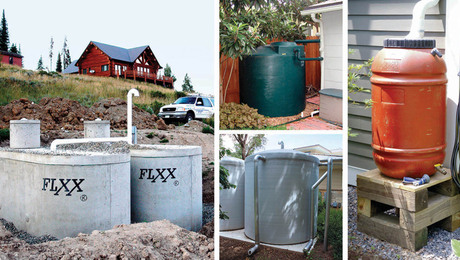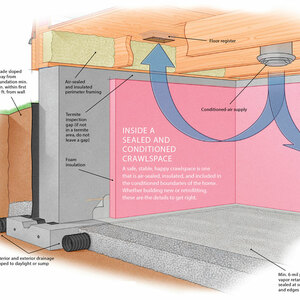Does anyone know of a grate or some system that closes a bathroom vent when not in use? It occurred to me that I am losing significant amounts of heat when I happened to put my hand near the external port of the duct when it was NOT on. Heat was pouring out. I’m wondering if there is some kind of ceiling vent cover that opens – similar to the hinged venetian style vents used for attic cooling- that would open when the vent is turned on….thanks
Discussion Forum
Discussion Forum
Up Next
Video Shorts
Featured Story

There's a constant source of clean water for you to use, and all you have to do is collect it.
Featured Video
Video: Build a Fireplace, Brick by BrickHighlights
"I have learned so much thanks to the searchable articles on the FHB website. I can confidently say that I expect to be a life-long subscriber." - M.K.

















Replies
If this is a vent fan you're talking about, there should be an automatic damper in the fan and another one outside where the duct exits.
No electrons were harmed in the making of this post.
if your fan is old then probably the little damper flap that keeps the quick route to outdoors closed off is stuck open. either clean it out or replace the fan (it could be all corroded if it's really old and your house is humid) and you shouldn't lose all that much heat.
the other heat-losing option is if your fan exits the house under the eave. On windy days the pressure differential on the windward or leeward side of the house will either blow air into the house or suck it out surprisingly fast, especially if your damper flap is dicey.
Both Nutone and Fantech have accessories and fan units with dampers.Regards, Scooter"I may be drunk, but you're crazy, and I'll be sober tomorrow." WC Fields, "Its a Gift" 1934
A little flap damper like you've got on a dryer vent discharge is going to slow down the heat loss, but the hot air will still be roaring out of there when the unit is off. This is probably a big, unnoticed source of heat loss, because you don't feel much of a back-draft of cold air that might twig you to the problem- it just depressurizes the house and enhances its ability to draw more cold air inward lower in the structure through every nook and cranny.
right if it's a pressurized situation - vent on the windward eave, let's say - then you notice it because wind blows in. if it's a depressurized situation - vent on the leeward side - then all you notice is how leaky the rest of your house suddenly is. if your vent exits on the roof through an approved, turned down, vent outlet, there's not the pressure differential caused by the air up against (or drawing away from) the whole side of the house. still a little bit of draft or draw, but not nearly to the same extent as a wall or eave exit.
I recently purchased a 4 inch inline damper at Home Depot. It works with standard 4 inch flex hose in a horizontal position.
Keith